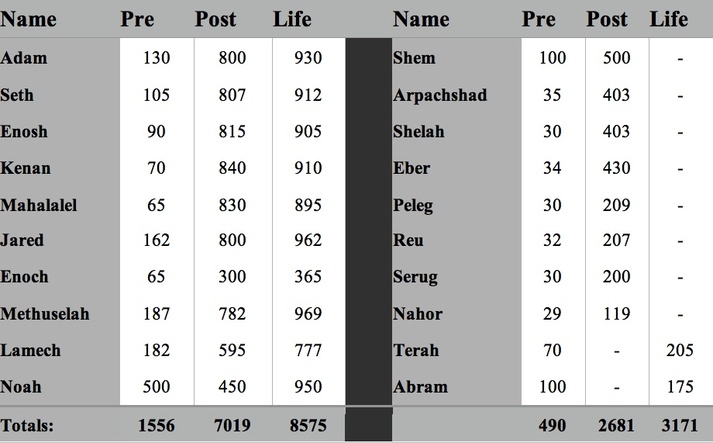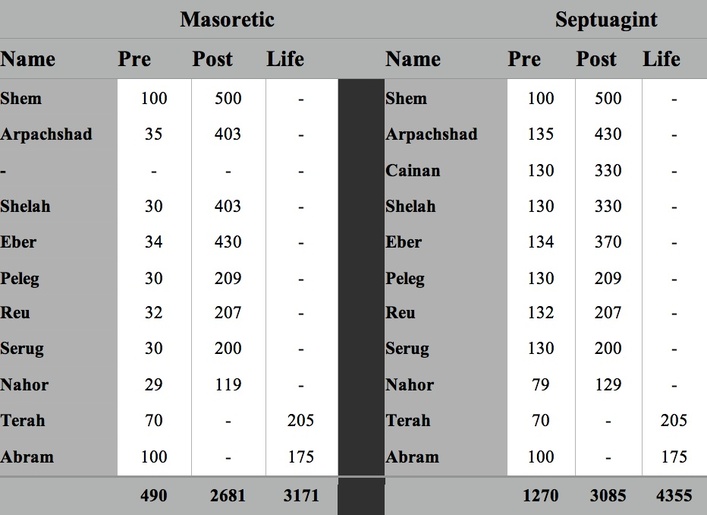
The apparent meaning of this information is that Noah gave birth to his sons 1556 years after creation. Add 100 years to that date gives the time of the flood. Shem birthed Arpachshad two years after the flood (ended or started?). Giving wiggle room for Jewish counting methods places Issac’s birth around 2148-2188 years from creation. This apparent meaning of the text coupled with the accepted timeframe of Abraham’s life places the flood at about 2500BC. The problem most people see is the implication in Egyptology that their rulers go back as far as 3000BC and beyond.
Another consideration is the data within the Septuagint. Whereas its accuracy is in question, it is still the predominant text quoted in the NT. We must at least see what it has to offer. Below is the data of the Septuagint concerning Genesis 11 next to the Masoretic Hebrew.

In the Greek data we find extended dates for many of the persons. These number differences tend to stick to whole numbers like 100, 70, 50, 30. There is no expectation to match these numbers perfectly. Remember, the Septuagint is an egyptian-greek translation of Hebrew which is nowhere approved as a divinely historical translation. But it is sufficient to support the messages found within the New Testament. Lest we be too quick to dismiss all information, this is the only record of Cainan, which Luke adopts in Jesus’ genealogy. There is something historically credible that Luke found valid. Luke offers no comment on the numbers however. Remember that Data does not equal proof. We must interpret the data to arrive at an understanding of what the author meant. We will hold the interpretations of this data to a following article. Keep this data ready for analysis.


